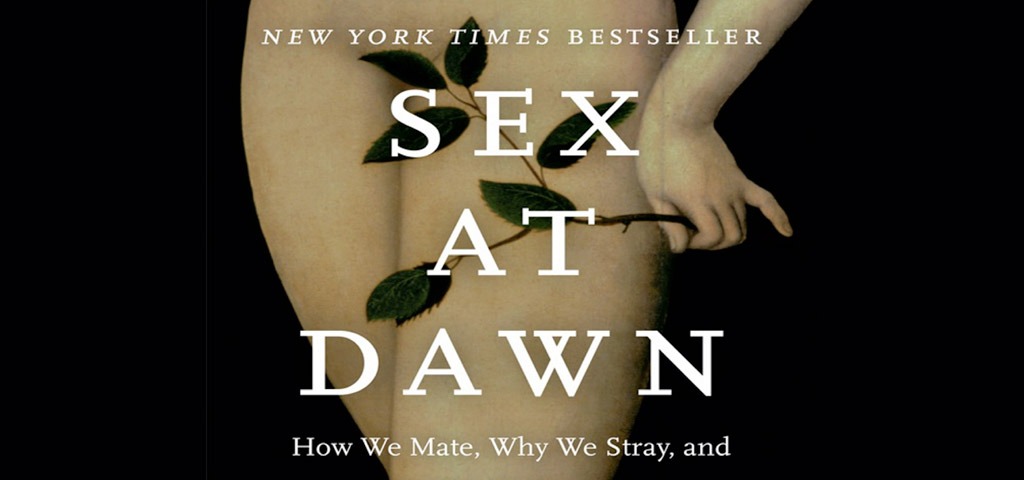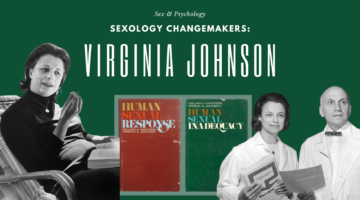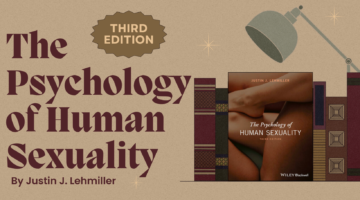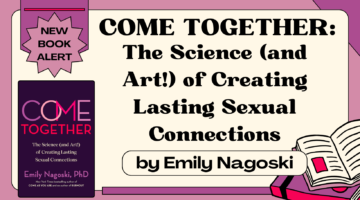Featured Book Series: Sex at Dawn
May 28, 2012 by Justin Lehmiller
A brand new addition to the blog is the Featured Book Series, in which I will review and analyze books relevant to human sexuality that I hope will be of interest to readers. Think of this as an opportunity to get some ideas for summer reading material, as well as an opportunity to participate in a virtual book club (discussion is encouraged!). I’m kicking things off with Sex at Dawn: How We Mate, Why We Stray, and What It Means for Modern Relationships (2010; Harper Collins). I realize this isn’t a new book and some of you may already be familiar with it, but I’m starting here because it is fresh in my mind from having assigned it in my Human Sexuality course this past semester. This is actually the very first time I have assigned a mass-market paperback as reading material in a college course, which should tell you that this is a book I think is definitely worth checking out.
For those of you who haven’t read Sex at Dawn, let me give you a quick overview of the main idea.The authors, Christopher Ryan and Cacilda Jetha, argue that traditional, evolution-based interpretations of human mating are fundamentally flawed (if you aren’t familiar with evolutionary psychology, see here for a quick primer). Specifically, Ryan and Jetha posit that modern mating preferences have little, and perhaps nothing to do with a “selfish” drive to propagate one’s genes or with sex differences in the amount of effort it takes to create a child. Instead, our mating strategies are seen as a product of the shift from hunter-gather societies to agricultural societies. In hunter-gatherer times, societies tended to be communal, sharing not only food and responsibilities, but also sexual partners. With the advent of agriculture, we developed personal property and political systems. Together, these things fundamentally altered human motivations and relationships and led to the system of mating and relating that we have today, in which monogamous marriage is held as the ideal we should all be striving for. In Ryan and Jetha’s perspective, however, this is far from our intended state. Throughout Sex at Dawn, they present provocative evidence for the idea that human beings are meant to pursue multiple sexual partners and argue that the traditional heterosexual marriage script may be setting people up for “unrealistic expectations” and “crushing disappointment.” Ryan and Jetha instead suggest that natural and healthy relationships do not necessarily have to include lifelong fidelity.
In my view, Sex at Dawn succeeds in providing some valid critiques of the traditional evolutionary approach and weaves a novel and enticing counter-narrative. Ryan and Jetha highlight several shortcomings of evolutionary research methods (e.g., over-reliance on correlational studies and college student samples) and theory (e.g., if humans are so concerned about passing along their genes, why is a man more upset when his wife gets impregnated by his brother than by a random stranger? Shouldn’t he be happier when the baby is carrying at least some of his DNA?). The authors also cite some fascinating cross-cultural evidence that supports their perspective, including a titillating discussion about how the size and shape of humans’ genitals suggest a non-monogamous approach to mating. They also present some incredibly provocative arguments that will leave you scratching your head wondering if they could really be true, such as the idea that culturally imposed monogamy has reduced sperm competition and, consequently, may be contributing to a decline in male testicular volume and an increase in infertility rates. That one kind of blew my mind! There are actually so many interesting pieces of information in here that I’m going to devote a future blog post to exploring some of the most intriguing ideas and research findings discussed in Sex at Dawn.
That said, I am not wholly convinced by the evidence presented. First, Ryan and Jetha attempt to discredit what they term the “standard narrative of human sexual evolution” (which many psychologists I know have argued is not always summarized fairly in this book) at least partly on the basis that certain research practices in psychology and anthropology have yielded inconclusive results. However, while they are arguing this, the authors make the case for their own perspective by citing mostly correlational and anecdotal evidence (which provides relatively weak support), and they make at least a few claims that go well beyond the bounds of their data. In some cases, they simply reinterpret findings that have traditionally been taken as support for the “standard narrative,” without offering new or more compelling evidence for their alternative view. In addition, Ryan and Jetha frequently point to a handful of obscure, modern day cultures that they believe are reflective of early hunter-gather societies and thus represent a more natural look at human behavior—however, can we really assume that these cultures have not changed over time or that they are truly representative of the way things used to be for our ancestors? Also, I found it puzzling that the authors were skeptical of most evolutionary science conducted in the past few decades, yet were so quick to accept information about what societies might have been like in times before there were even written records. Thus, while I found Sex at Dawn to be a truly fascinating and incredibly thought-provoking read, there are certainly some holes in the story.
Moreover, for a book that sums up evolutionary psychology as “contemporary moralistic bias” that seeks to rationalize why men and women behave the way that they do, Ryan and Jetha appear to do some moralizing themselves. Their words go beyond simply presenting evidence at points and verge on social prescription. Case in point: “by insisting upon an ideal vision of marriage founded upon a lifetime of sexual fidelity to one person—a vision most of us eventually learn is highly unrealistic, we invite punishment upon ourselves, upon each other, and upon our children.” The authors are careful never to explicitly say how people “should” live, and I very much appreciate that. As you can see, however, there is a not-so-subtle message between the lines. This book is thus just as much about politics as it is about science, but that’s part of what makes it impossible to stop reading.
Despite any misgivings I noted above, I thoroughly enjoyed Sex at Dawn and highly recommend it because it will leave you pondering some of the most fascinating questions there are about the nature of human sexual relationships. It is for this reason that I assigned it to my students and will likely do so again because it generated some of the most thoughtful discussions and insightful papers I have come across in all of my years of teaching.
Click here to check out Sex at Dawn on Amazon.com. For more reading suggestions, check out my Recommended Books & Films page.
Want to learn more about Sex and Psychology? Click here for previous articles or follow the blog on Facebook (facebook.com/psychologyofsex), Twitter (@JustinLehmiller), or Reddit (reddit.com/r/psychologyofsex) to receive updates.

Dr. Justin Lehmiller
Founder & Owner of Sex and PsychologyDr. Justin Lehmiller is a social psychologist and Research Fellow at The Kinsey Institute. He runs the Sex and Psychology blog and podcast and is author of the popular book Tell Me What You Want. Dr. Lehmiller is an award-winning educator, and a prolific researcher who has published more than 50 academic works.
Read full bio >


